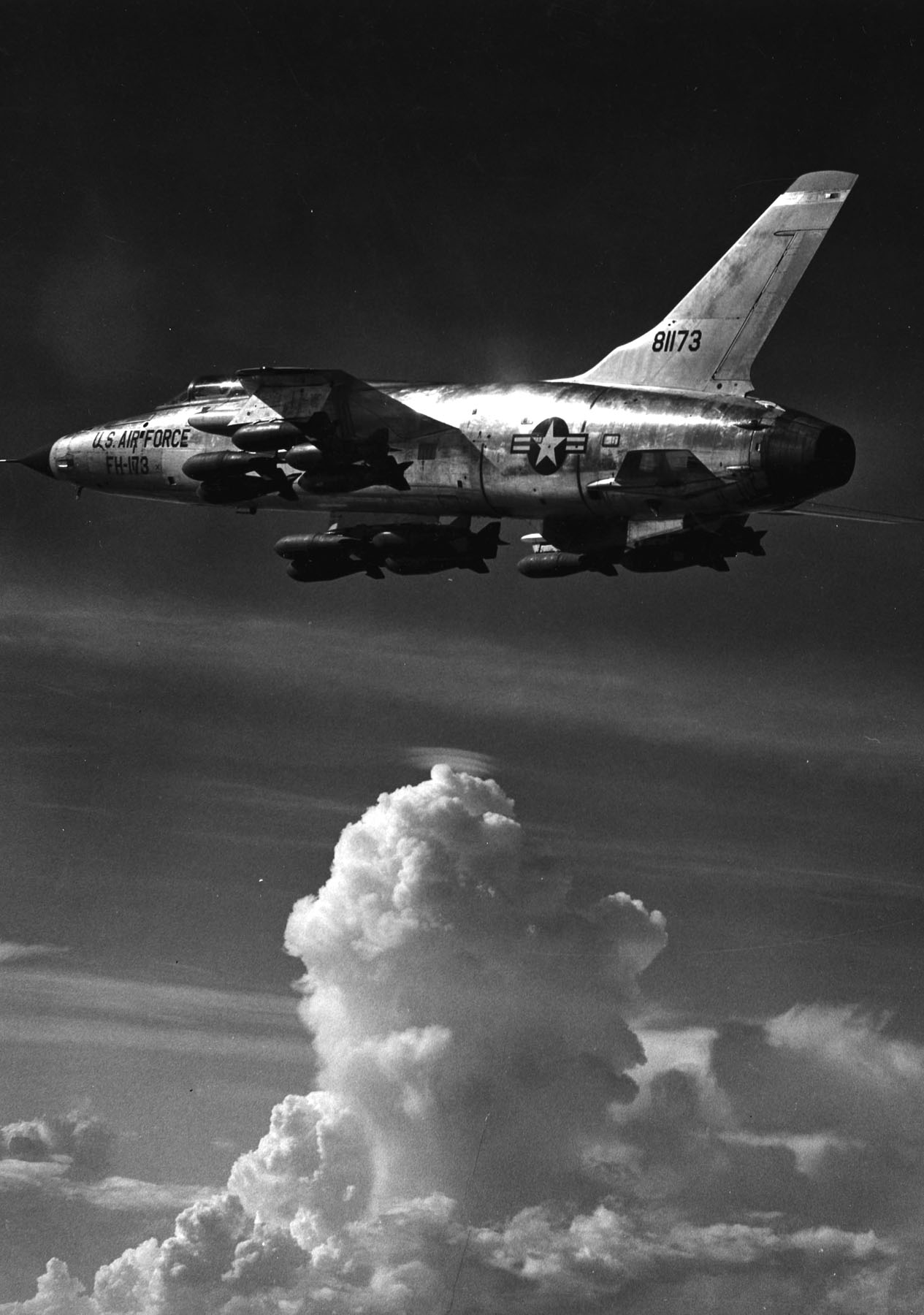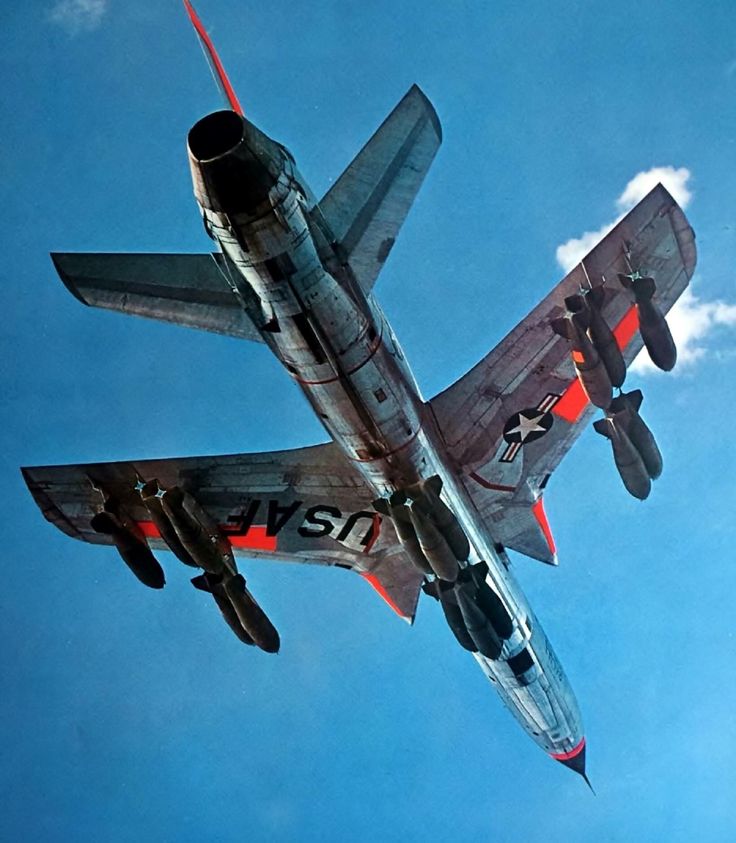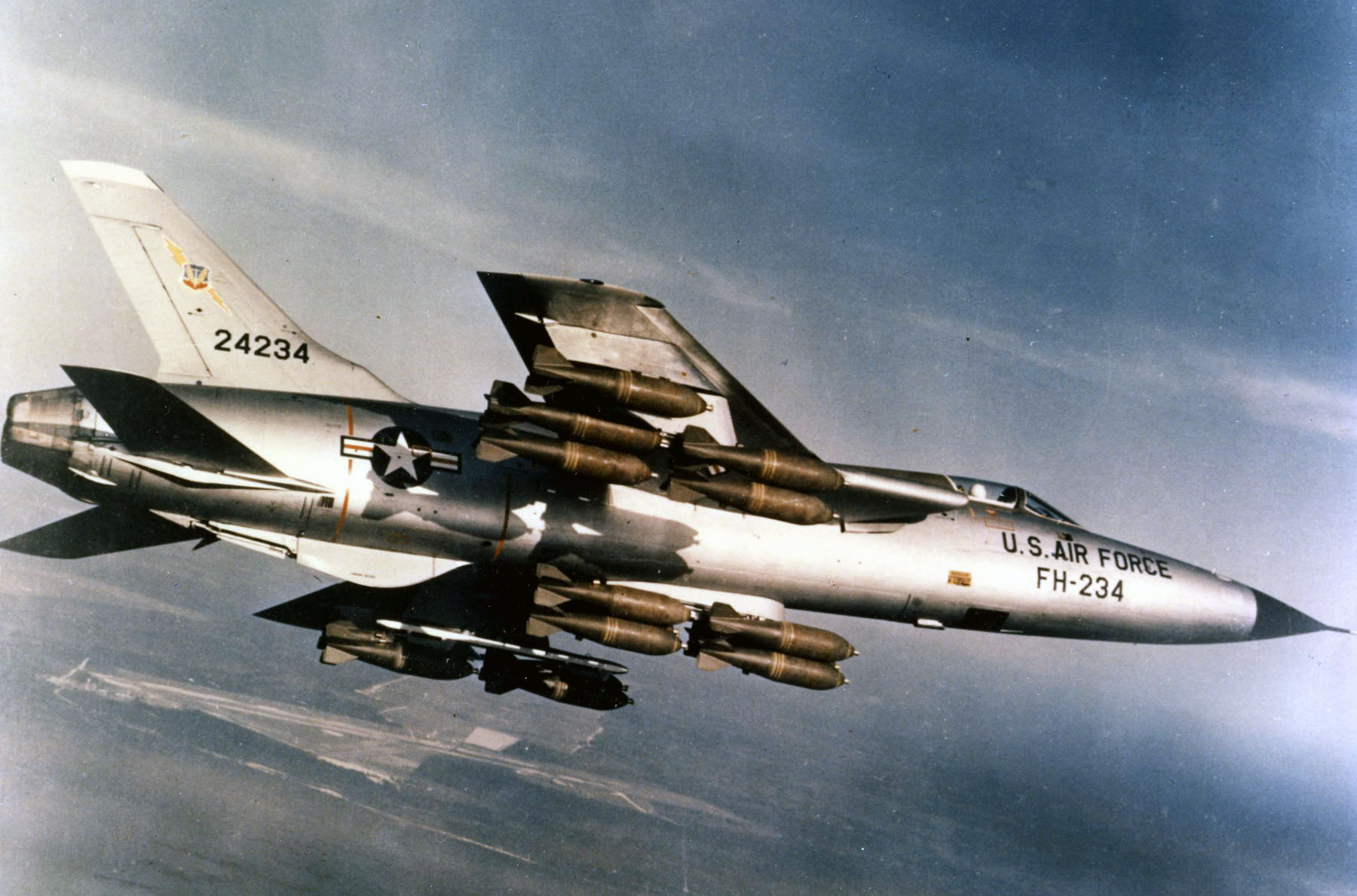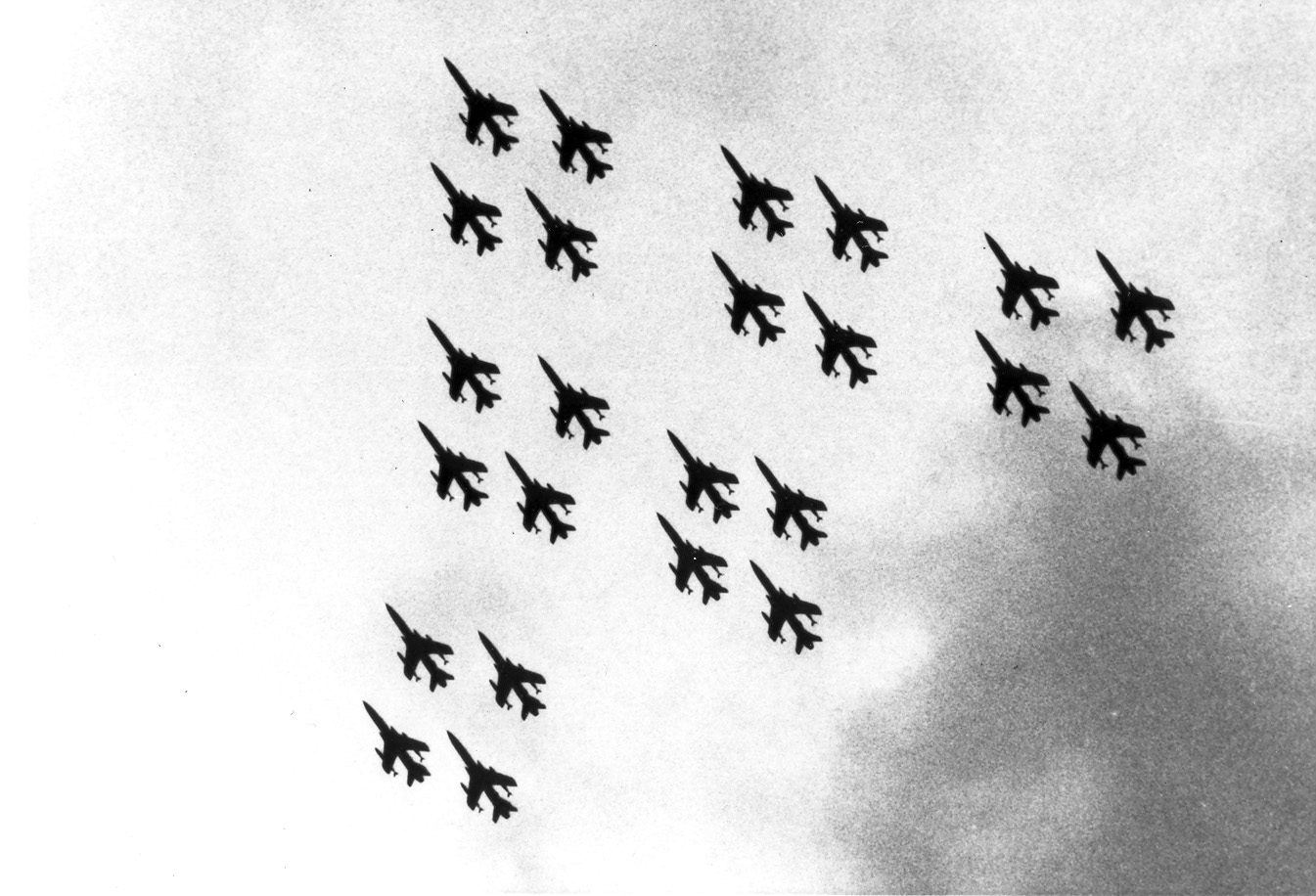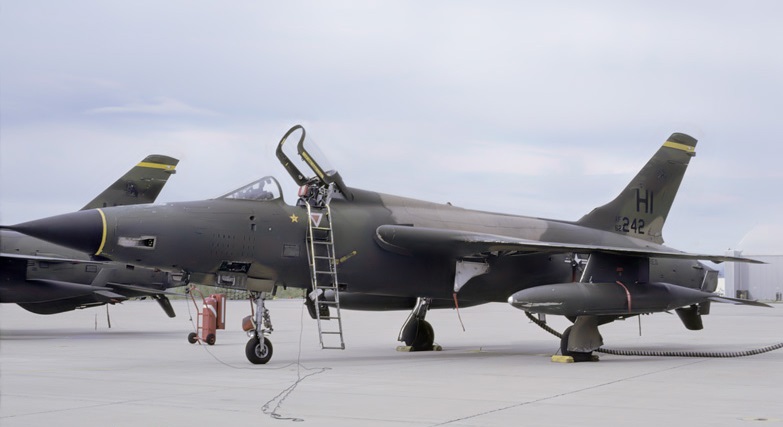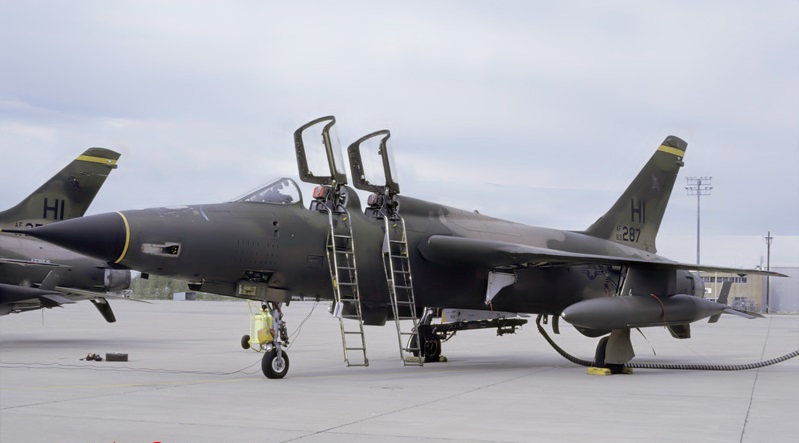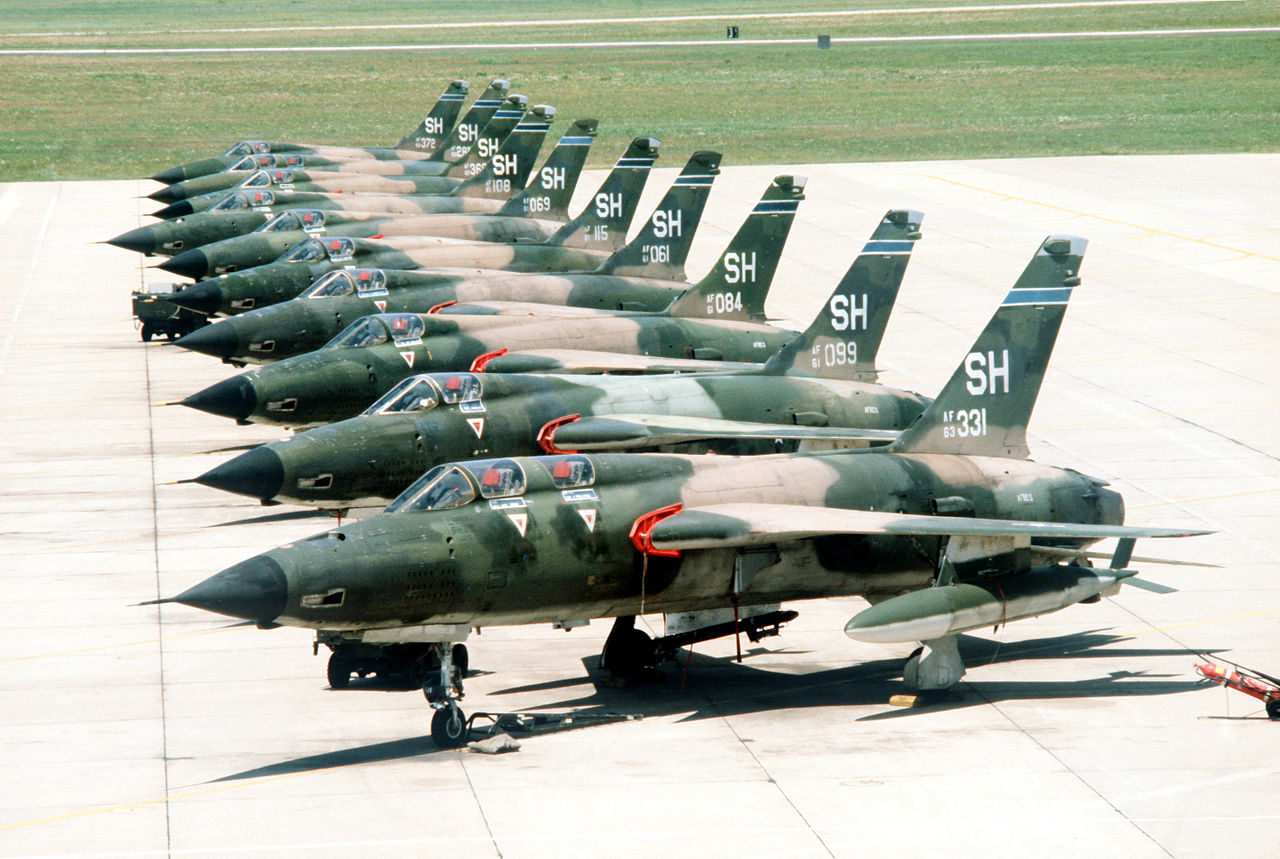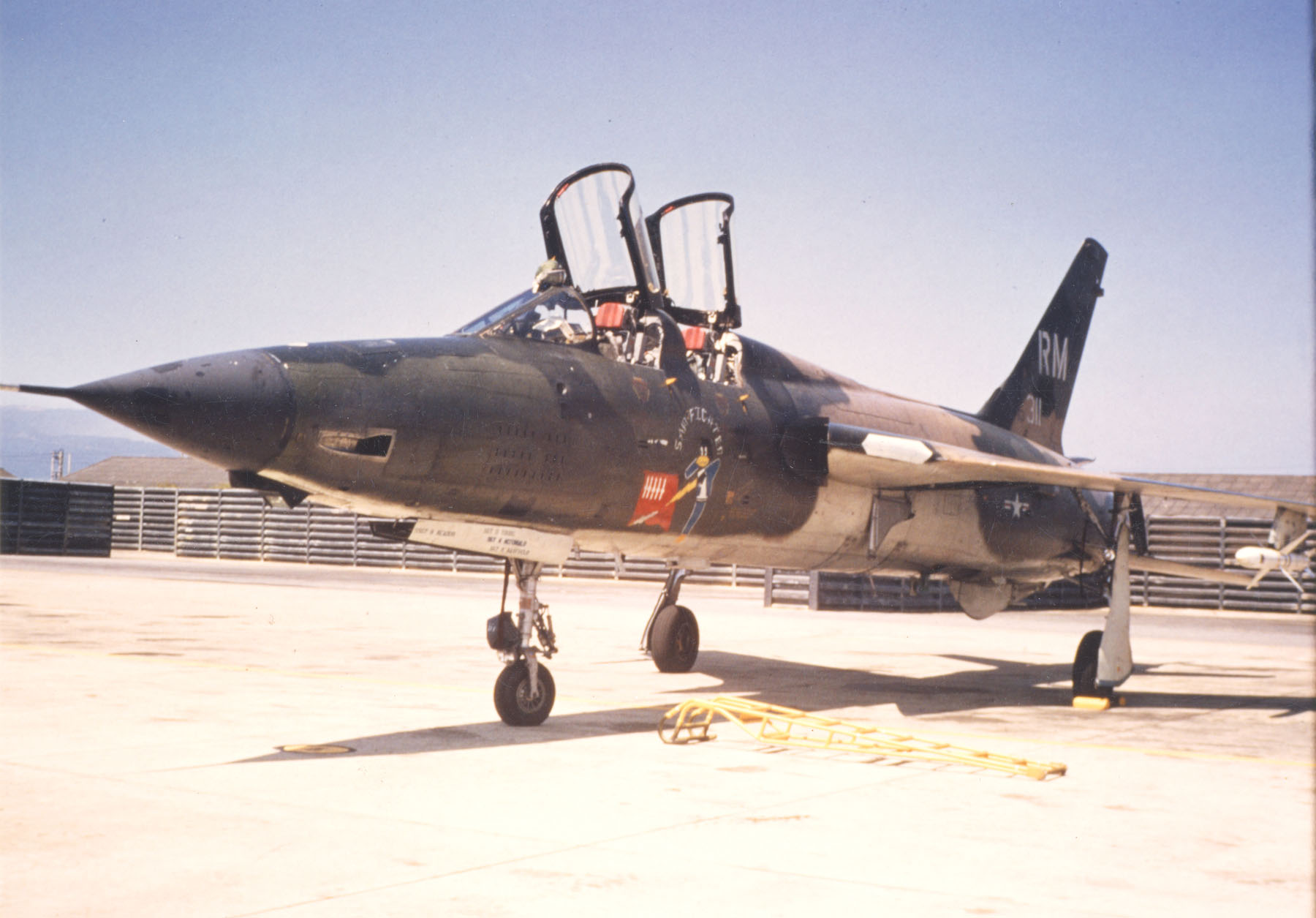
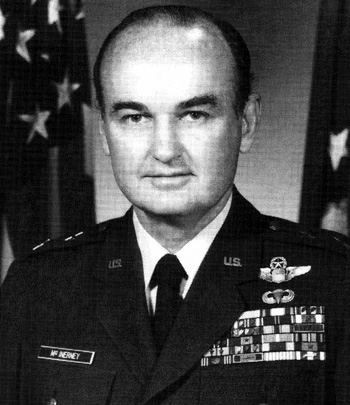
The President of the United States of America, authorized by Title 10, Section 8742, United States Code, takes pleasure in presenting the Air Force Cross to Lieutenant Colonel James Eugene McInerney, Jr., (AFSN: 0-23452), United States Air Force, for extraordinary heroism in military operations against an opposing armed force as Pilot of an F-105 airplane in the 13th Tactical Fighter Squadron, 388th Tactical Fighter Wing, Korat Royal Thai Air Base, Thailand, 7th Air Force, in action as Leader of a flak suppression flight in action against the Paul Doumer Bridge, a major north-south transportation link on Hanoi’s Red River in North Vietnam, on 11 August 1967. On that date, Colonel McInerney suppressed six active surface-to-air missile sites defending a strategic highway and railroad bridge. Despite concentrated barrages of anti-aircraft fire and three missiles directed against his flight, Colonel McInerney displayed the highest degree of courageous leadership in destroying two missile sites and forcing the other four into sporadic operation. As a direct result of his actions, the strike force suffered no losses and imposed extensive damage to this vital target. Through his extraordinary heroism, superb airmanship, and aggressiveness in the face of hostile forces, Lieutenant Colonel McInerney reflected the highest credit upon himself and the United States Air Force.
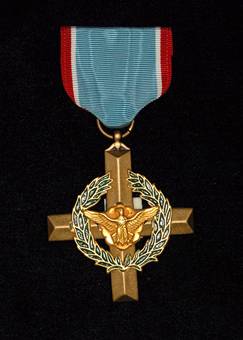
General Orders: Department of the Air Force, Special Order GB-123 (March 27, 1968)
Action Date: August 11, 1967
Service: Air Force
Rank: Lieutenant Colonel
Company: 13th Tactical Fighter Squadron
Regiment: 388th Tactical Fighter Wing
Division: Korat Royal Thai Air Base, Thailand
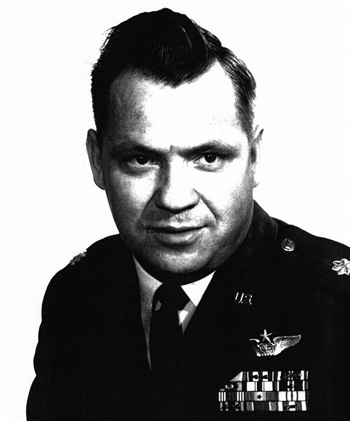
The President of the United States of America, authorized by Title 10, Section 8742, United States Code, takes pleasure in presenting the Air Force Cross to Captain Fred Shannon (AFSN: 0-3100995), United States Air Force, for extraordinary heroism in military operations against an opposing armed force as an F-105 Electronics Warfare Officer of the 13th Tactical Fighter Squadron, 388th Tactical Fighter Wing, Korat Royal Thai Air Base, Thailand, in action in the lead aircraft of a flak suppression flight near Hanoi, North Vietnam, on 11 August 1967. On that date, Captain Shannon suppressed six active surface-to-air missile sites defending a strategic highway and railroad bridge. Despite concentrated barrages of anti-aircraft fire and three missiles directed against his flight, Captain Shannon displayed the highest degree of courageous leadership in destroying two missile sites and in forcing the other four into sporadic operation. As a direct result of his actions, the strike force suffered no losses and imposed extensive damage on this vital target. Through his extraordinary heroism, superb airmanship, and aggressiveness in the face of hostile forces, Captain Shannon reflected the highest credit upon himself and the United States Air Force.

General Orders: Department of the Air Force, Special Order GB-123 (March 27, 1968)
Action Date: 11-Aug-67
Service: Air Force
Rank: Captain
Company: 13th Tactical Fighter Squadron
Regiment: 388th Tactical Fighter Wing
Division: Korat Royal Thai Air Base, Thailand
© 2015, Bryan R. Swopes
